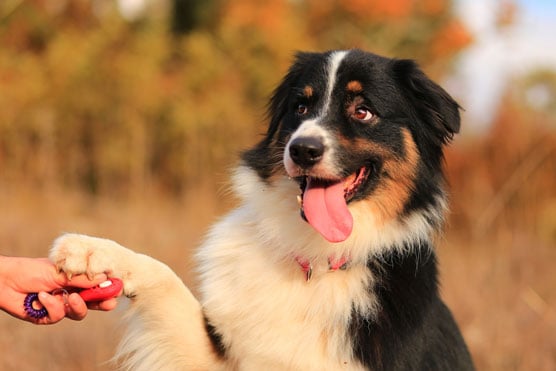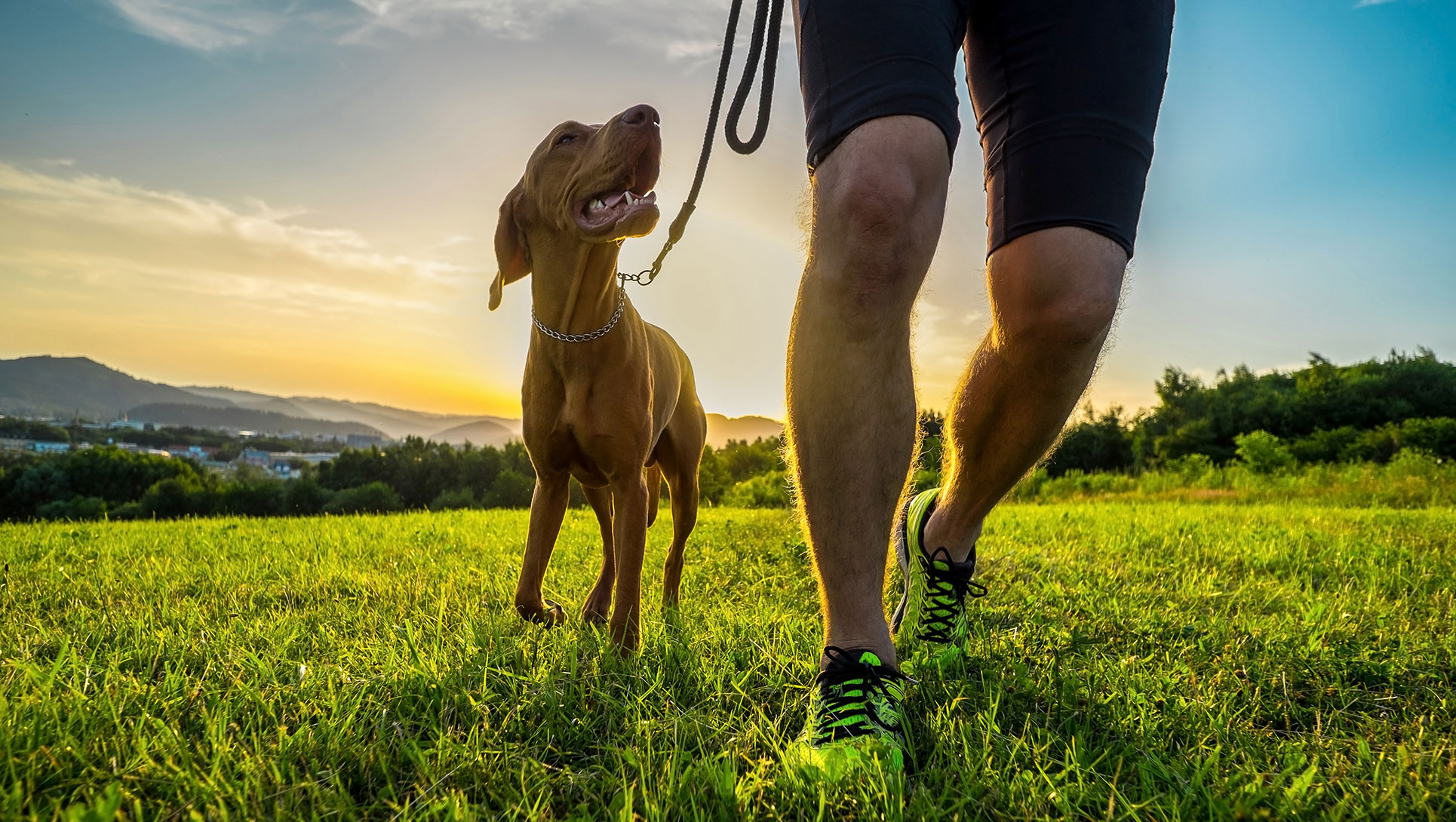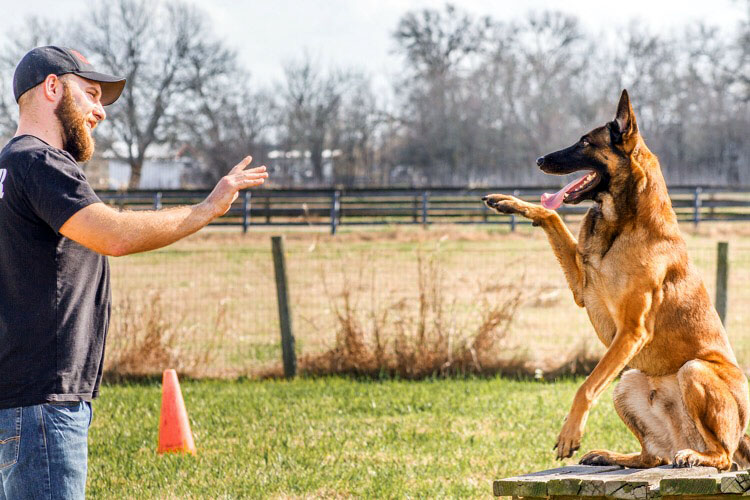Effective Puppy Training to Help Your Pet Grow into a Well-Behaved Adult Dog
Effective Puppy Training to Help Your Pet Grow into a Well-Behaved Adult Dog
Blog Article
Transform Your Pet dog's Behavior With Proven Training Approaches
Changing your dog's habits calls for a nuanced understanding of their individual attributes and demands, as well as the application of proven training approaches. By employing favorable support and identifying important signs in their body language, you can properly address usual behavior concerns such as too much jumping or barking. Uniformity in your training method not only improves obedience however additionally fosters a much deeper bond of trust and regard between you and your animal. The path to successful change may offer unexpected difficulties that warrant additional expedition.

Recognizing Pet Dog Habits
Understanding pet habits is vital for efficient training and interaction between humans and their canine companions. Pet dogs, as social pets, exhibit an array of behaviors affected by genes, environment, and experiences. Recognizing these behaviors assists owners customize their training approaches to satisfy the particular requirements of their pet dogs.
Secret aspects of dog behavior consist of body language, articulations, and social interactions. For example, a wagging tail usually shows enjoyment, while a lowered head might signify submission or fear. Comprehending these signals can help proprietors interpret their pet dog's emotion and respond properly. In addition, socialization plays a vital function fit behavior; pet dogs that interact positively with numerous individuals and various other animals are usually much more versatile and well-adjusted.
Additionally, acknowledging tension signals-- such as pacing, avoidance, or panting actions-- can stop escalation right into a lot more major concerns. Proprietors who are in harmony with their canine's behavior can create a risk-free and caring setting, fostering count on and boosting the training process. Ultimately, a deep understanding of canine habits lays the structure for an unified relationship and reliable training results, guaranteeing both dogs and their proprietors thrive with each other.
Favorable Support Techniques
Favorable reinforcement methods are widely acknowledged as one of the most effective techniques for training pets, promoting a favorable knowing setting. This technique entails gratifying wanted behaviors with treats, appreciation, or play, thus encouraging the pet dog to duplicate those behaviors (Dog training). Unlike punitive methods, favorable reinforcement develops trust fund and strengthens the bond between the pet dog and the trainer
To execute positive support effectively, timing is important. Incentives ought to be provided immediately complying with the preferred behavior to aid the pet make the link. Uniformity is also vital; utilizing the same commands and rewards helps the canine recognize what is anticipated. In addition, varying the benefits can keep the pet dog involved. For instance, rotating in between treats, playthings, and spoken appreciation can keep passion and motivation.
It is essential to note that favorable support is not concerning bribery; rather, it is concerning strengthening etiquette. In time, as the dog discovers to link specific activities with positive outcomes, the frequency of incentives can be slowly lowered, transitioning to spoken appreciation or intermittent rewards. This method not only encourages obedience however also promotes a delighted and confident dog, making training a much more satisfying experience for both events involved.
Resolving Typical Problems
Addressing typical concerns throughout pet training is vital for making certain a unified and effective connection in between the canine and its owner. Many pet owners run into behavioral challenges, such as too much barking, leaping, and chain drawing. Understanding the origin creates of these habits is crucial for efficient training.
Excessive barking may originate from boredom, stress and anxiety, or an absence of socializing. To mitigate this, offer ample physical workout, mental excitement, and possibilities for social communication with both human beings and other pets. Jumping can usually signify exhilaration or a need for attention. Training the dog to sit upon welcoming can reroute this behavior positively.
Leash pulling is one more common problem, frequently resulting from a dog's passion to discover. Using appropriate leash handling methods, integrated with training methods that motivate loose-leash strolling, can significantly boost this behavior.
On top of that, concerns like source guarding or separation stress and anxiety require customized strategies. Steady desensitization and counter-conditioning can be efficient in resolving these obstacles. By identifying and proactively handling these usual concerns, dog owners can cultivate an extra satisfying training experience and strengthen the bond with their canine buddies.
Uniformity in Training
Uniformity is a cornerstone of reliable canine training, as it develops a clear structure for the dog to comprehend behaviors and assumptions. When commands, cues, and rewards are applied uniformly, pet dogs can quicker grasp what is required of them. Irregular training can result in confusion, causing undesirable actions that discourage both the fitness instructor and the dog.
To accomplish uniformity, it is crucial that all members of the home follow the very same training methods. As an example, utilizing the very same spoken signs and hand signals guarantees that the canine receives consistent messages. Furthermore, the timing of modifications and benefits ought to correspond; immediate reinforcement boosts the chance that the dog will associate the actions with the result.
Routine technique sessions, paired with organized routines for feeding, walking, and playtime, aid pets anticipate and understand their setting, making them more responsive to training. Inevitably, uniformity promotes a feeling of safety and security and count on, encouraging pets to discover a lot more successfully.
Building a Solid Bond
Exactly how can fostering a strong bond in between a canine and its proprietor improve the training experience? When a pet dog really feels safe and secure in its connection with its proprietor, it is more most likely to show favorable behaviors and be receptive to finding out.

Furthermore, a reputable connection can decrease anxiety and behavior concerns, as dogs are less likely to act out when they really feel comprehended and looked after. For that reason, prioritizing the development review of a solid bond visit homepage not just improves the training experience however likewise contributes to a better and more well-adjusted pet. Eventually, the journey of training transforms right into a joint partnership, bring about lasting behavior enhancements.
Conclusion

Owners who are attuned to their canine's behavior can develop a nurturing and risk-free atmosphere, cultivating trust and improving the training procedure. Inevitably, a deep understanding of canine behavior lays the foundation for a harmonious relationship and efficient training results, guaranteeing both canines and their owners prosper with each other.
Resolving usual concerns throughout dog training is essential for guaranteeing a unified and successful relationship between the pet dog and its owner (Dog training).Consistency is a foundation of efficient canine training, as it establishes a clear structure for the pet dog to recognize assumptions and habits.In conclusion, changing a canine's habits through proven training methods requires an understanding of canine actions, the application of favorable reinforcement strategies, and an emphasis on uniformity
Report this page